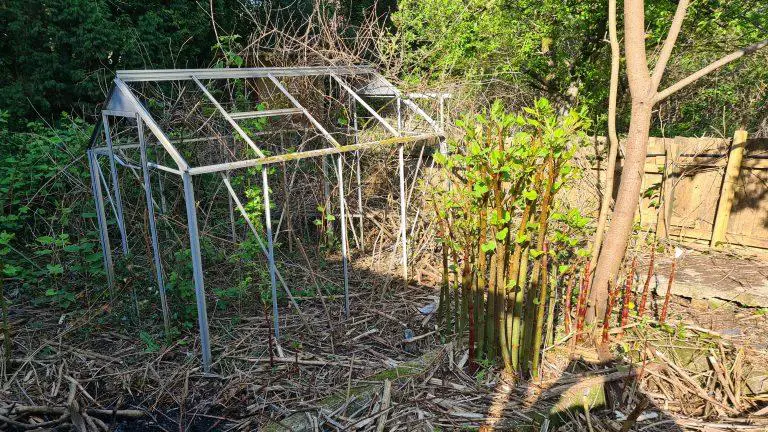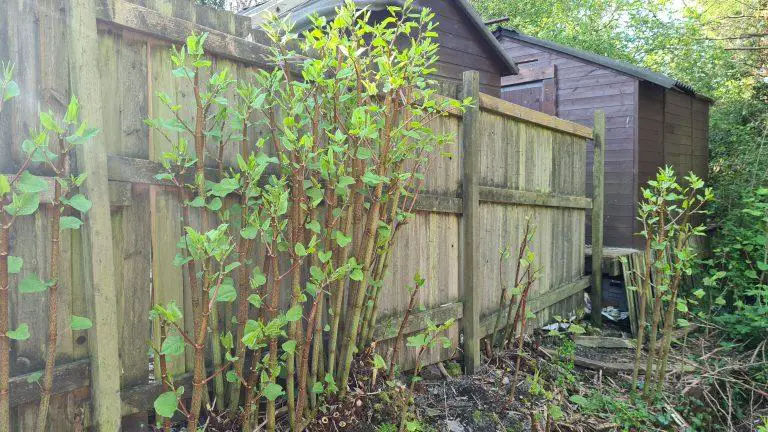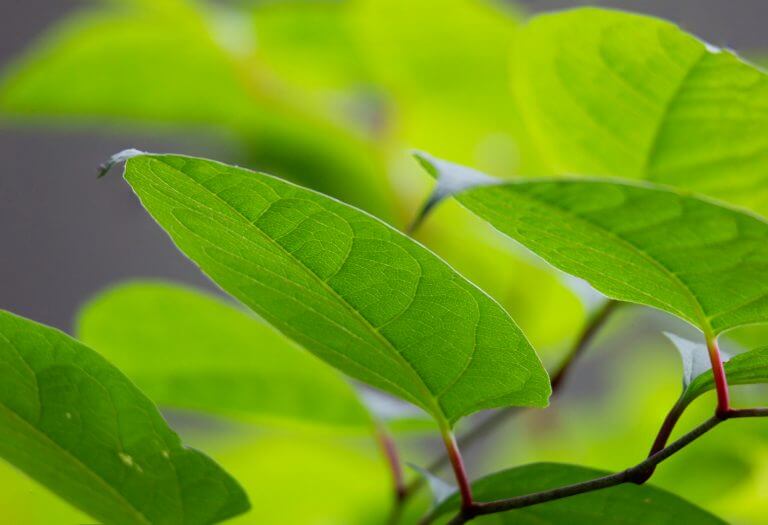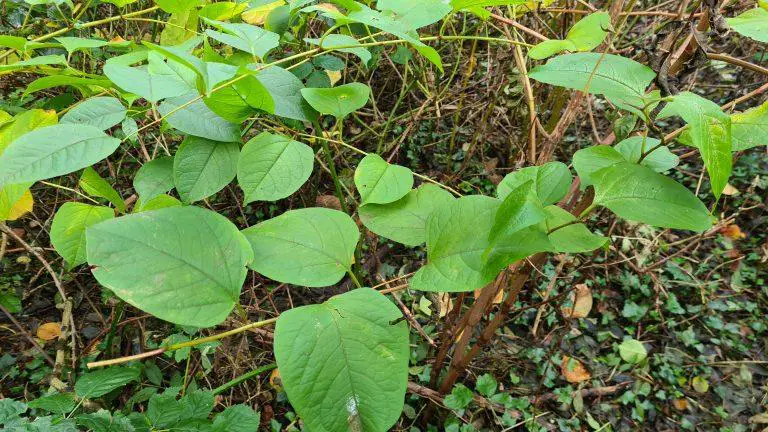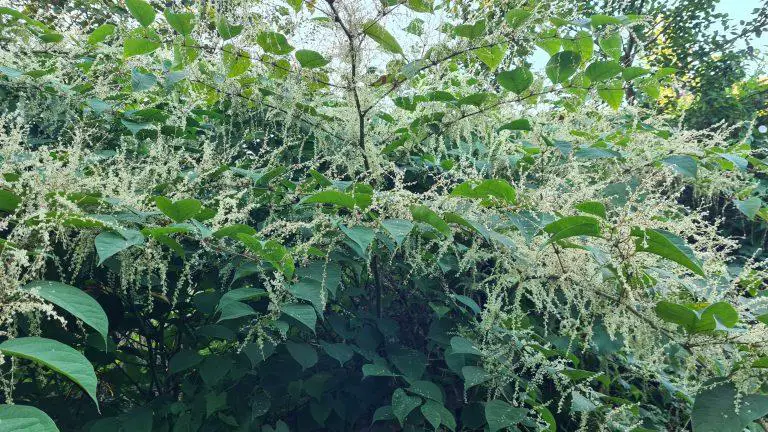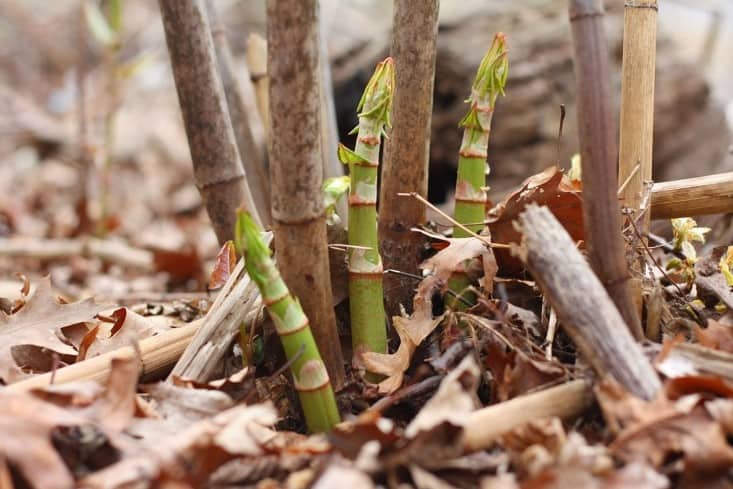One thing about the Japanese knotweed is how it always catches land and homeowners unawares during the first weeks of spring. Rapidly, the Japanese knotweed can grow from tiny shoots to about 3 meters in height.
Identifying Japanese knotweed in spring can be a tricky deal. During this period, this weed can be mistaken for several other weeds of the same species.
Identifying Japanese knotweed is a vital skill that will save you trouble and your hard-earned money. Unfortunately, the characteristics of this knotweed differ depending on the season.
For example, the plant will die and become dormant during winter but appear to be growing in early spring. By knowing the characteristics of this plant, you will be able to identify it during any season.
How to identify Japanese knotweed in spring
The Japanese knotweed in spring usually emerges in March. At this time, the plant is red- pinkish buds appearing from the ground. Most people liken spring shoots to asparagus spears.
The plant grows unstoppably into a hard and thick structure, which has a prominent purple speckles pattern.
The green leaves begin to appear from the stems in April. The weed’s leaves are shovel or heart-shaped with a pointed tip. They grow alternately, creating a distinct zigzag pattern on the stem.
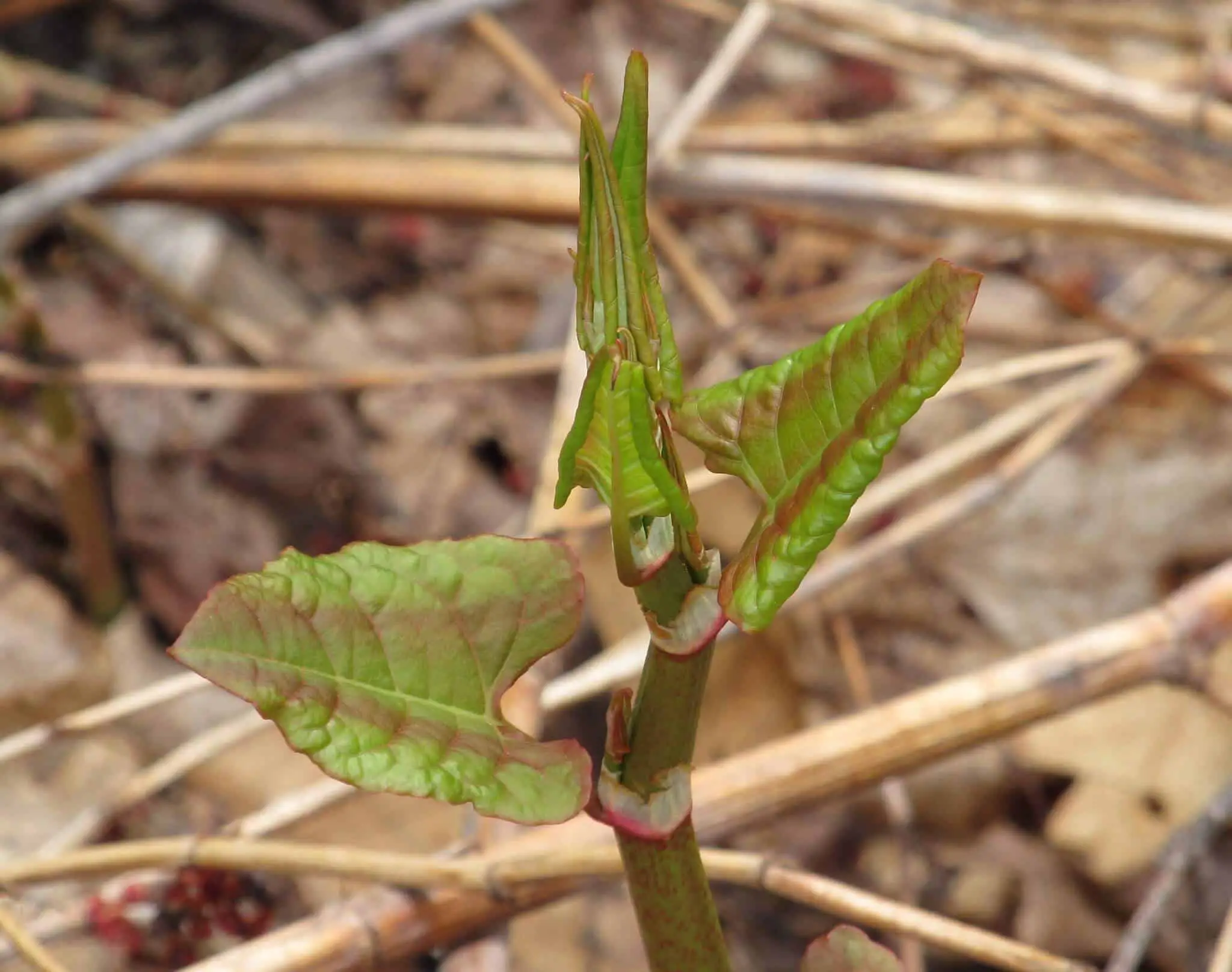
What is the impact of Japanese knotweed?
Each year, the UK spends a vast sum of money on Japanese knotweed treatment and infrastructure alignment. Additionally, the country loses more money in property devaluations each financial year.
The knotweed spreads so fast to the extent of suffocating and killing other plants within the same ecosystem. The weed is also a threat to structures and drainage systems. It can grow up to 20cm a day in spring.
The rhizomes system can grow deep to about 3 meters and 7 meters horizontally in every direction hence causing cracks on houses, tarmacs, and underground water pipes.
It is difficult to get rid of this plant; it quickly grows back and spreads further when its stems are cut to remove it. Unless you hire a specialist, it may not be easy to get rid of this weed completely.
The weed’s smallest piece of rhizomes will quickly grow into an invasive plant within some months. The weed can thrive anywhere, even at the slightest chance.
Some property owners cannot find buyers for their homes because of the presence of Japanese knotweed on the land. Unless one has an eradication program in place, it becomes an uphill to get to sell the property.
Where does Japanese knotweed grow?
In the UK, Japanese knotweed grows in any part of the country and causes considerable damage to properties. The weed grows faster in damp areas with proper shade. This is why Japanese knotweed in spring is the best time to identify it and create a plan to eradicate it.
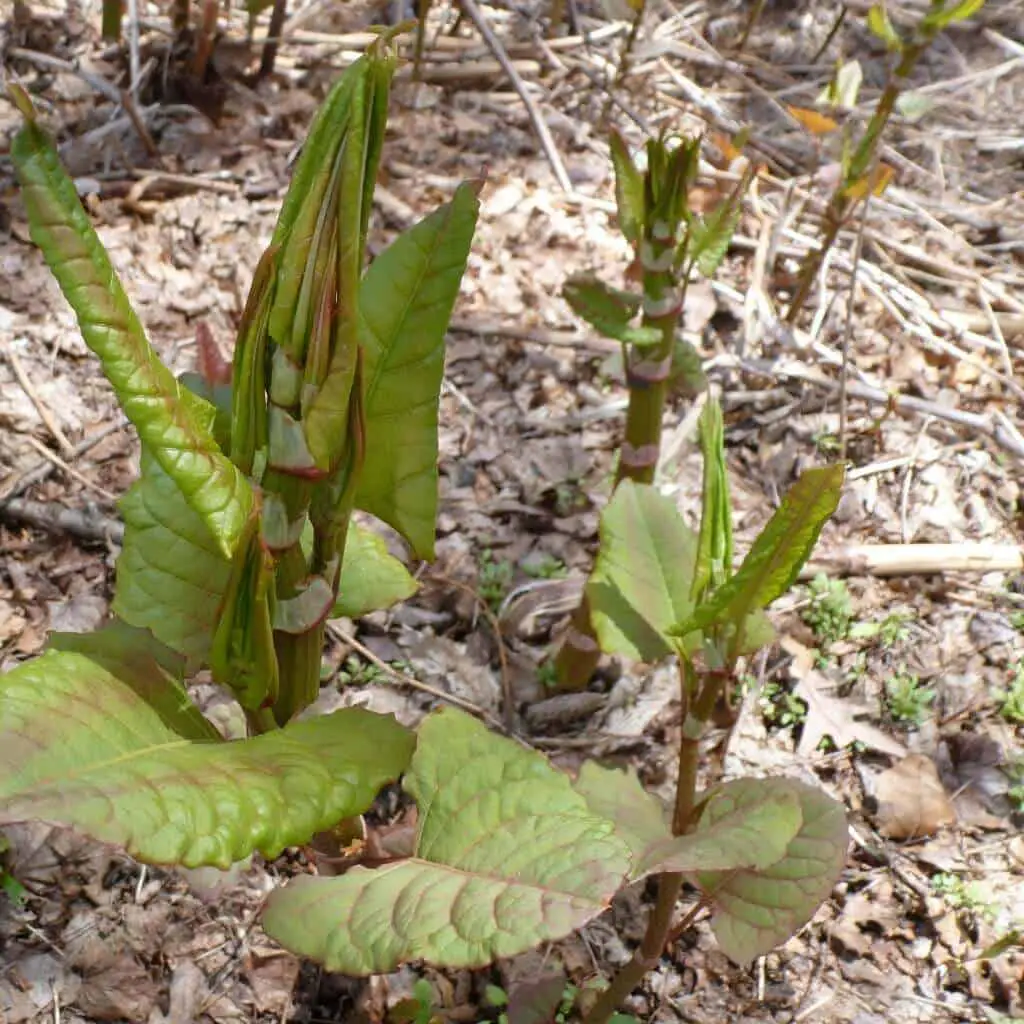
Japanese knotweed and the law
What does UK law say about Japanese knotweed? First, contrary to what most people assume, Japanese knotweed is not a notifiable plant.
According to the Anti-social behaviour, crime, and policing Act 2011, individuals must take appropriate action to remove and prevent the spread of invasive plants such as Japanese knotweed.
The UK law classifies Japanese knotweed as controlled waste; this is according to the Environmental Protection Act 1990. For this reason, digging out the weed may lead to lawsuits over the disposal.
The wildlife and Countryside Act 1981 is an offence to cause Japanese knotweed to grow in the wild. This means that it is illegal to dump the knotweed anywhere.
Several measures are put in place by the UK government to ensure that the spread of invasive plants is controlled at all times.
What should you do if you find Japanese knotweed?
The first step is to ensure that you are not panicking for no reason that the plant is genuinely Japanese knotweed. You may hire a weed specialist to help you identify the plant when you are not sure.
It is crucial to act fast when you find Japanese knotweed in your garden. The most common method of Japanese knotweed removal for a small infestation is digging up the root system. This method is much faster than the use of herbicides.
However, according to the law, as stated above, you will have to dump your waste in a licensed public landfill. Another downside to this method is that it can be tiring.
You may not use this method in areas with extensive rhizome root systems; you will have to hire heavy machinery that can dig deeper into the soil and uproot the roots completely. Remember, even the smallest of the fragments will grow into a new plant.
Another preferred knotweed removal strategy is covering the area with a translucent material. Do not trim the knotweed stems since they will pierce the material, thus the ineffectiveness of this method.
The most effective method of knotweed eradication is the use of herbicides. Glyphosate weed killers are the most preferred chemical compounds that have previously shown impressive results when it comes to Japanese knotweed eradication.
Remember that the weed has an extensive root system, it will take a couple of treatments repeatedly for some years to kill the weed completely. The Glyphosate herbicides work by rapidly penetrating the stem to kill the cells as fast as possible.
Other environmentally friendly methods are being tested; these methods are meant to replace the chemical treatments that are harmful to other vegetation and air pollutants.
Want to know more about Japanese knotweed in spring?
Knotweed Removal aims to provide the most up-to-date information, help and advice for YOU to make informed decisions. If you are unsure or uncertain about how to proceed, please reach out to us and we will gladly come back and advise you as best we can.
Governmental advice can be found here and the UK law covering the removal of Japanese Knotweed as stated under the Wildlife and Countryside Act 1981 can be found here.
The best means to contact us is via our email – hello@knotweedremoval.tips
Do not forget we have a library of blogs covering many areas relevant to Japanese Knotweed, our free downloadable How-to Guides and Product Reviews on the latest methods being employed to eradicate or remove Japanese Knotweed.
Knotweed Removal, UK

